What’s In Your Hunting Pack?
October 30th, 2016 by BTC Editor
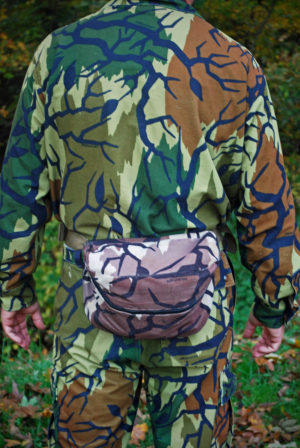
In two days, a couple buddies and I are heading to Pike County for a four-day bowhunting trip… No, not THAT Pike County, but it’s close. In fact, it’s right across the river from it. Both my pals are fairly novice bowhunters, and this is the first full season for one of them. Seeing as how I’ve been on several 10-day, DIY excursions to Colorado chasing my beloved wapiti, they’re leaning on me heavily to provide guidance as to what to bring. It’s actually not that uncommon a question from even veteran bowyers, as I see the “What’s In Your Bag?” query on the bowhunting forums quite often.
After well over a couple decades’ worth of bowhunting, with most of that time consisting of over 100 stand sits annually, I’ve definitely settled on a list of “must-haves” as well as items that have found their way into and out of my fanny pack. I’ll break down below exactly what I carry with me, and the use for each item.
- A small Ziploc bag (for weather protection) holding a good amount of toilet paper, plus hunting licenses. Also included in this bag are small zip ties for affixing the licenses to the deer’s back legs, a tube of chapstick (seems my lips are prone to drying out on windy days while on stand), and a handful of cherry cough drops (nothing worse than getting that tickle in your throat when you’re set up within 100 yards of that big buck’s bedding area!). I also put a nice lensatic compass in the bag, to keep the glass lens from getting scratched all up by the other items in my pack.
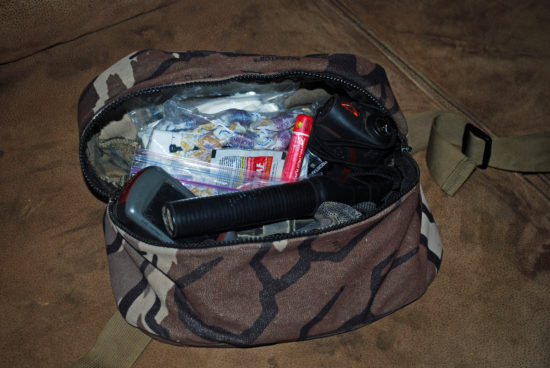
I’ll give you a tip about the toilet paper before moving on… I carry quite a bit of it with me, and obviously you probably realize one of its primary purposes. But I also lean on it just as heavily when tracking a deer at night by propane lantern. I tear off little half-squares and place every couple feet along the blood trail I’m unwinding… it’s remarkable how you can hold up your lantern and see those white squares trailing off into the blackness, and they’ll really help you get a “line” on the direction the deer’s traveling and where to look for next blood if you’re having difficulties. An added bonus is that when you’re done, you don’t have to go back and retrieve all of them — just let the next rain dissolve all of them for you.
- A mini-mag flashlight… the triple-battery version. I often end up in hairy places after dark I’ve never been through before, and I like to see what I’m trying to wade through – be it thorn bushes or a small creek. The version I like to carry just fits into my fanny pack from end to end, and utilizes three “AA” batteries.
- A headlamp. Sometimes, I’ll opt to turn my cap around backwards and slap on the headlamp. It’s especially helpful when I’m assembling my stand at the bottom of my tree after I get down in the pitch black, or when I’m gutting a deer after dark.
- A Leatherman multipurpose tool, the small kind. It contains a three-inch knife blade that I’ve used to gut over 50 deer, antelope and elk with. And on the off chance I need a pair of pliers, they’re included too.
- Limb saw… to trim shooting lanes with, and more importantly to cut off small branches on the tree I’m going up with my climber.
- My pull-up rope. I bought a commercial one with the plastic swiveling ends and hooks on it, cut those off and attached those to 30’ of parachute cord. Packs much tighter than the commercial one I bought.
- Rattle bag. I’ve got a very nice set of real rattling antlers that sound awesome, but they’re a pain to carry all the time. My rattle bag fits nicely inside my pack and is always there from the third week of October until December.
- Bleat can. I can’t attribute any single deer to coming in to the can call, but I’ll mix it into my rattling sequences any way; the hope is it’ll sound like the estrus doe that the two bucks are fighting over.
- True Talker grunt tube. This has accounted for more deer riding home with me than any other single piece of equipment.
- Ninety percent of the time, my shot opportunities are limited by heavy undergrowth and are 30 yards or less. Every once in a while though, I’ll sit a field edge where the rangefinder comes in handy.
- Diaphragm turkey call in a clear case. Archery deer tags come with two turkey tags included, and I won’t pass up an opportunity to call to a passing flock. I’ve got a wall-full of turkey fans above my desk that were all taken with my bow in deer season.
- Extra release. In case I leave my main one at the truck or it falls out of the tree for some reason.
- Four bow hooks. My bow goes on one above my left shoulder, and my fanny pack hangs from one around seat height on the same side of the tree. The other two are spares.
- A Kwikee Quiver caddy with my Octane quiver holder attached. I screw this into the left side of the tree, and affix my quiver upside-down so if I shoot and need to reload quickly, I simply reach behind me without looking and pull another arrow out.
- A hand-held Magellan GPS. This is a recently new addition to my pack, and one that I’ve come to value. I shoot a lot of deer just before dark as evening hunts comprise 98% of my trips afield (I’m just not a morning person). Usually, by the time I recover the deer and head back to my vehicle to get my game cart, it’s pitch black once I return to the scene of the crime. Having marked where my deer is laying via the GPS sure does make it a whole lot easier once everything looks completely different in the dark – and a whole lot easier to get out of the woods.
You could ask me any day of the year, and that’s what I’ll have in my fanny pack. It’s the main component of a system that I’ve fine-tuned for over 20 years of bowhunting, and it’s what enables me to grab my gear extremely quickly when I get home and be on my way to the woods in just a few minutes. I’m never scrambling around looking for this item or that; I simply know exactly where everything I need is.
Now, if it was only that easy to know where that big buck was…
Greg Staggs is the former back-page columnist for Inside Archery, and his writing regularly appears in such magazines as Outdoor Life and Petersen’s Bowhunting. Staggs loves introducing his two boys to all things outdoors, including fishing, trapping, canoeing and camping, and has been chasing turkeys and big game exclusively with archery equipment for over 20 years.
Ken Haas of Whitetail Freaks – 9/11 Interview
September 11th, 2016 by BTC Editor
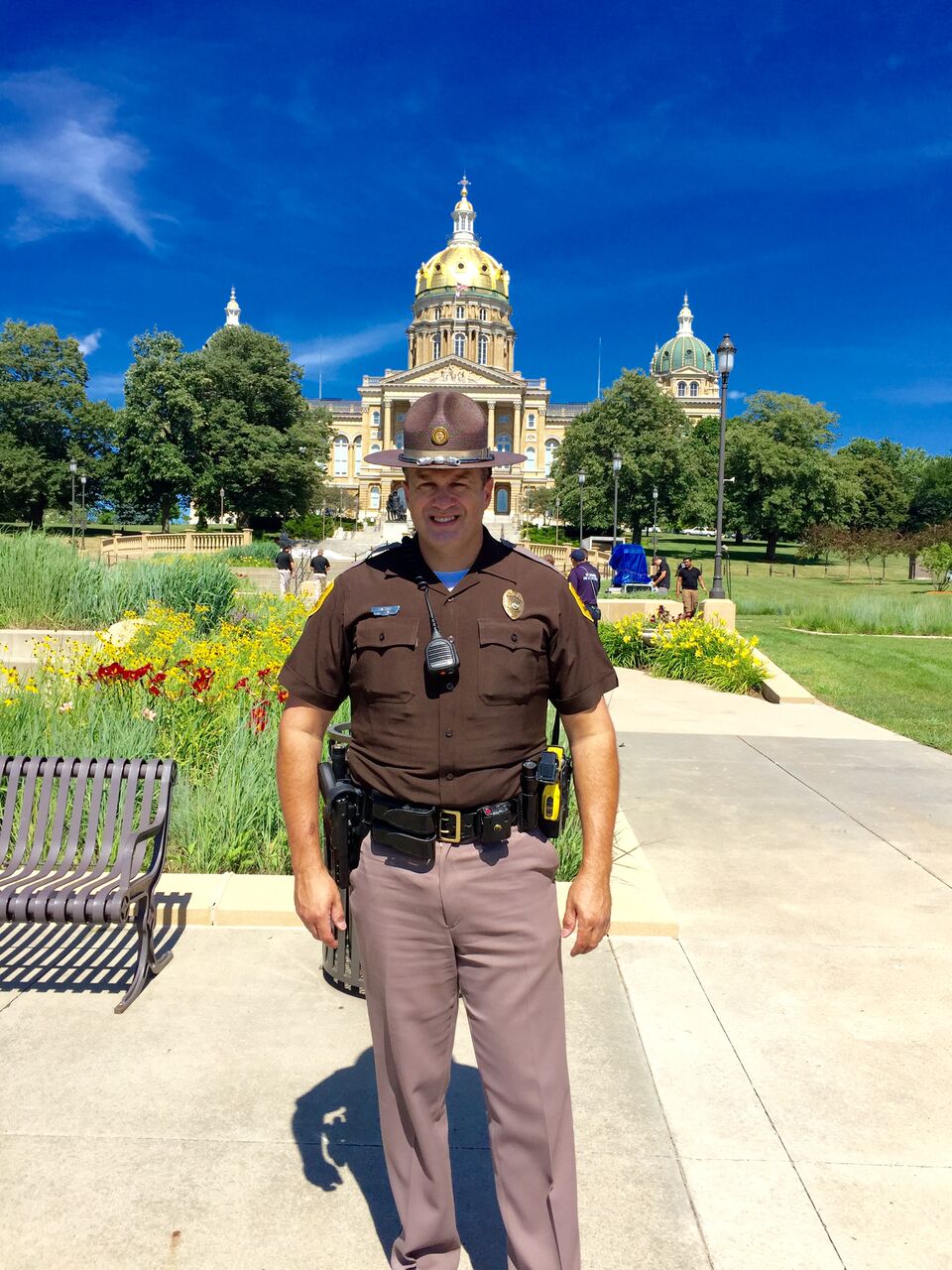
BTC: Do you recall where were you and what you were doing on 9/11 when you heard about the terrorist attack? What type of impact did those events have on you as you watched them unfold?
KEN: I was sitting in a grocery store in Council Bluffs, Iowa eating breakfast with two other Troopers while the news was on. We all watched in utter disbelief as the second plane hit the tower. All of us there were prior military and we all had the same gut wrenching feeling that we were under attack and felt very helpless watching the entire event unfold. I remember that day being very quiet and the airways going quiet as all air traffic had been grounded. Living equal distance from Offut Air Force Base and Omaha Eply Airfield it was eerily quiet. It was a huge surprise to see a plane I knew well fly by, that being Airforce one descending into Offut Airforce Base, which was no doubt bringing the President to the center of the country for safety.
As our soldiers continue to fight overseas, it is our job as Peace Officers to protect our country’s border to border against foreign and domestic terrorists. Extremist groups are a constant threat and the uniformed officer, sometimes referred to as “The Thin Blue Line”, are without a doubt this country’s greatest assets when preventing, disrupting and deterring future acts of violence and terrorism.
Few people know that terrorism is funded in part by the sale of drugs. The exploitation of the United States and its unfortunate appetite for elicit and illegal drugs is problematic when we spend billions of dollars on heroin that has been imported from overseas. I mention heroin first because of the horrible impact it has on our people, but I do not disregard the impact of the other drugs that are imported as well. As you start to see the larger picture of what is happening, you will understand that the facts of our purchasing these illicit drugs is devastating. That same money used from the sale of drugs will then go back into the pockets of terrorist organizations, allowing them to continue to fund their attacks on the United States and the rest of the world.
As with anybody that watched the unfortunate events unfold on September 11th, that day will never be forgotten. The loss of life, the bravery of the firefighters, the police and other EMS personnel, their memories will not be forgotten. It has been my experience that no matter how bad the tragedy, there is always something to be gained from it. In this case, understanding what funds terrorism and that the profit has cost the world thousands of lives lost unnecessarily, has fueled my motivation and the motivation of many others. The world’s worst criminals are the most vulnerable while they are in transit. By intercepting them we are able to make the biggest impact where we can.

Ken and his significant other, Malissa Driver. She’s a flight nurse and they are a family committed to public service.
There are many other stories like mine and my arrest of the terrorist suspect (see newspaper article below) that never see the light of day for security reasons, but rest assured uniformed and plain clothed officers are out every day doing their best to ensure that these major criminals do not travel freely to commit acts of violence throughout the country. I also take great pride in educating police officers from every type of policing agency across the country in criminal and terrorist apprehension training. I have instructed for more than 10 years in the state of Iowa, educating our officers and working for a private program called Desert Snow. I have traveled to almost all 50 states and shared what I have learned with thousands. I also take great pride in hearing about the success stories from the officers following the training.
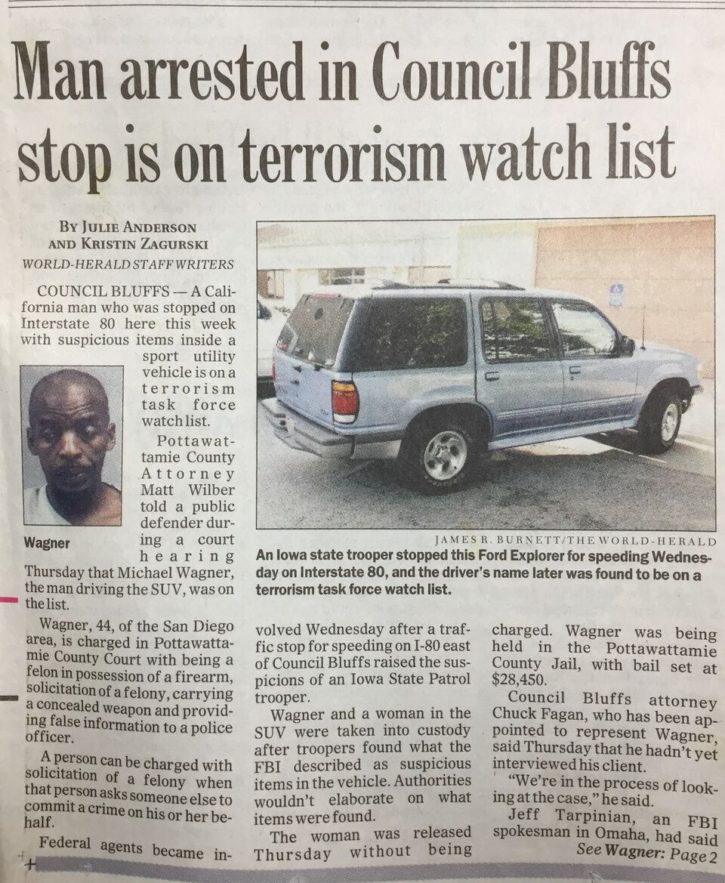
A newspaper article about a terrorist suspect Ken arrested
In 2011 in Glendale, Arizona I was given the distinct honor as being chosen as the United States 2010 and 2011 Bob Thompson Criminal Interdiction Officer of the Year by the United States Department of Transportation, the United States Department of Justice, the Drug Enforcement Administration, the Drug Interdiction Assistance Program, the El Paso Intelligence Center, and the former recipients of this prestigious award. I have very humbly received many awards in my career, but all of them ill in comparison to sharing and continuing to share what I have learned to educate new officers in the same principles for understanding and recognizing when criminal activity is afoot. That impact, no matter how significant, will change the course of someone’s life in a positive way.
Most importantly, I hope people understand that the Peace Officers of this country cannot do the job without the support of its citizens. As I travel and teach officers across the country, the sentiment from those officers and their communities that they serve is the same. The officers are being overwhelmed with gratitude from the good citizens of this country who didn’t understand that this is not just a Peace Officers fight, but this is a fight that includes everyone in our nation. We who serve without a doubt need the support of our communities and the willingness of those people to share information with us when they see things that are not right. I believe it is this cooperation that will continue to keep our country and its people safe. And those that continue to help law enforcement have my unwavering gratitude and appreciation for their continued help and their dedication to the protection of our communities. For those that have gone out of their way, and for everyone that has taken the time and thanked a Peace Officer, fire fighter, or EMS personnel, I thank you!!!! You, are the people that I am talking about.
BTC: What do you feel is the most rewarding about your job as a state trooper?
KEN: The most rewarding part of my job is tough. It has many facets that stretch out in many directions. Being a first responder and saving lives is huge. So is protecting the innocent from crime and the relentless pursuit of major criminals on our nation’s roads. Few people consider the fact that all crime is, at some point, in transit: the people perpetrating the crime, the proceeds of the crime, the tools to facilitate the crime, or evidence of a crime committed.
BTC: What skill sets learned from your job and training have helped you the most as a hunter?
KEN: So you might ask yourself, “What does this have to do with me hunting, and how do I apply what I’ve learned from such a tumultuous career?” It’s simple. It’s the desire to pursue something, in this case a whitetail deer, and becoming a student of the sport. Many people will refer to me as an expert in my field, both as a Peace Officer and as a hunter. Although it is very humbling, I see myself as a student who is always looking for new ways, a better understanding, and never taking for granted the information that is shared.
One instance I’ll share with you happened last year while hunting. As I was sitting in the blind and watching a buck chasing a doe in and out of cover, I watched intently as I always do and enjoyed watching the doe try to elude the buck. Soon as the buck lost sight of the doe and he could no longer see her he employed a tactic that was not only smart, but something that I had never seen happen before, or at least understood its purpose. The whitetail buck started to stomp his foot and blow in the same alarming mode as if he was to have spotted or smelled some type of danger. I immediately suspected that he had caught our wind and could possibly smell us. So I checked the wind direction only to be reassured that it was correct and the chances of that buck smelling us was nonexistent. That buck taught me that he would employ the same tactic that he would use to alarm deer of danger to get the doe to run from heavy cover where she was hiding so he could continue to pursue her. This was the first time I had ever seen this activity and understood what was happening.
At the end of the evening I immediately called Don Kisky to talk to him about what I had seen and ask him what his opinion was and what he thought about the encounter. After a short discussion, Don had told me that he had just seen the same behavior this year. He had never seen it before but had the same concern I did, that the deer actually had smelled or seen something that made the deer alarmed. We both enjoyed a good laugh as I stated to Don, “I might have taught Don Kisky something”. And knowing Don Kisky, that’s next to impossible when it comes to hunting whitetail deer. Really we just shared an observation that we both learned from.
So how does my career pertain to whitetail deer hunting you might ask? Simple. It’s the same perseverance, it’s the same willingness to learn and continue to learn, and a never quit attitude that keeps me going. It’s also tradition, a strong sense of brotherhood, and it’s something I love to share with my children. My children understand the “circle of life” and the life lessons that we have had the privilege to enjoy together. They understand that hunting isn’t a right, it’s a privilege, one that we enjoy along with many other privileges. All of those privileges came at a very high cost and I feel very humbled and privileged to be able to share with many two of my greatest passions. To quote Lee Greenwood, “And I won’t forget the men who died that gave that right to me”.
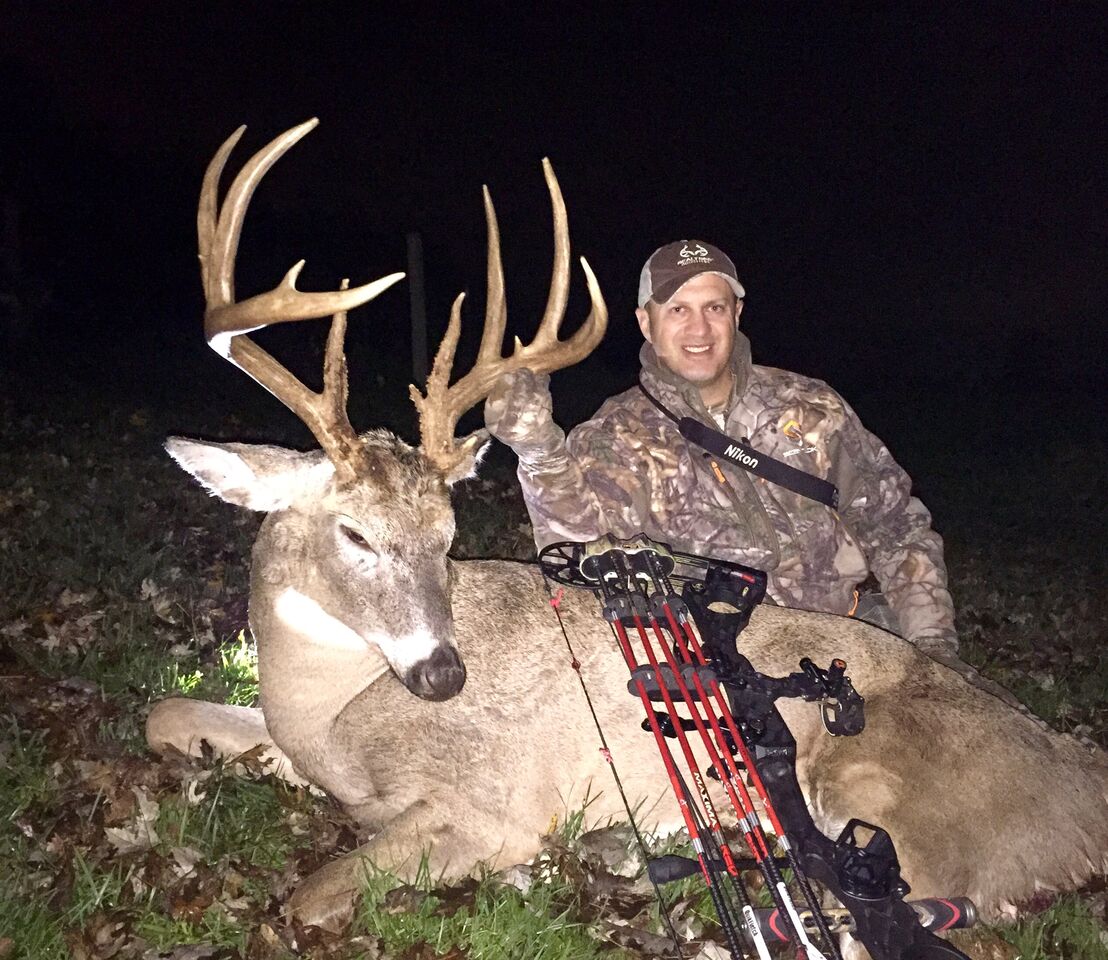
One of Ken’s 2015 bucks
Trooper Kenneth W. Haas #345 Iowa State Patrol
Ken Haas is a native of Omaha Nebraska and lifelong resident of the region. Upon graduating from Millard South High School in 1990 Ken joined the Army National Guard, honorably serving for six years.
Ken received a Bachelor of Science in Criminal Justice from the University of Nebraska-Lincoln in 1996. While working on his B.S. degree, Ken worked as an Intern for both the Nebraska State Patrol and Lincoln Police Department, affirming his desire for a career in law enforcement.
Ken joined the Iowa State Patrol in 1996 and is a 19 year veteran as a State Trooper. Ken served as the Iowa State Patrol Intelligence Officer in 2012, receiving a secret security clearance and was instrumental in implementing the department’s Suspicious Activity Reporting (SAR) initiative. Ken is the lead Criminal Interdiction Instructor at the Iowa DPS Academy, a Drug Interdiction Assistance Program/El Paso Intelligence Center (DIAP/EPIC) certified Instructor, an Associate Instructor for Desert Snow and instructs the Iowa Department of Public Safety (DPS) Law Enforcement Intelligence Network (LIEN) School.
Ken has served in many capacities during his career with the State Patrol including Canine Handler, SWAT team member, Sniper, Hazardous Materials Technician, and Field Training Officer. His dedication to professional development includes more than 600 hours of continued education in interdiction and hundreds of hours in a variety of topics including but not limited to defense tactics, firearms and emergency medical services.
During his career as a Trooper, Ken has been responsible for more than 350 major drug and currency seizures, and involved in more than 600. These seizures include, but are not limited to, more than 23,500 pounds of Marijuana, 10 pounds of heroin, 1,200 pounds of cocaine, 200 pounds of psilocybin mushrooms, 150 pounds of Crystal Methamphetamine and $13M United States currency.
As a direct result of criminal interdiction enforcement Ken has been involved in murder investigations, bank robberies, fraud, theft, weapons, terrorism and a lethal force situation,. Fifteen of the seizures resulted in a controlled delivery of the contraband to further the investigation. These controlled deliveries have resulted in the forfeitures of more than 78 vehicles (53+ were outfitted with after-market compartments designed for concealing and transporting contraband).
Ken is a certified Level III inspector of commercial motor vehicles. His experience with contraband seizures in commercial motor vehicles includes commercial rental trucks, refrigerated trailers with manufactured compartments, dry van trailers with manufactured compartments, car carriers, fifth wheel motor home transporters, Motor coaches, and seizures of contraband co-mingled within legitimate loads. Ken also has many personal use arrests in commercial motor vehicles and one “cloned” AT&T service vehicle.
Ken has traveled to 43 states to train FBI, DEA, Homeland Security, TSA, state and local officers, task force officers and attorneys in criminal and terrorist interdiction. He also travels internationally to provide training for the US Department of Justice International Criminal Investigative Training Assistance Program (ICITAP) and trains stateside for the US Department of Transportation Drug Interdiction Assistance program.
With extensive courtroom testimony experience in both State and Federal courts throughout Iowa and the United States, Ken is considered an expert witness in highway criminal interdiction.
Ken is a proud father of three wonderful children and has served as a State Trooper for 20 years. He is a Taijutsu Blue Belt and when he is not patrolling or instructing Ken is an avid whitetail hunter. He is currently in his 8th year with the television series “Realtree Whitetail Freaks” on the Outdoor Channel.
Ken’s opinions expressed in this blog entry are his own and do not reflect the opinions of the Iowa Department of Public Safety.
A C H I E V E M E N T S A N D A W A R D S
2014 Certificate of appreciation from the Department of Defense and the ICITAP program for providing Criminal Interdiction and Terrorist Training to the Kosovo Police in Pristina Kosovo.
2011 Award from The El Paso Intelligence Center in conjunction with the Drug
Enforcement Administration for “The Largest U.S. Criminal Highway Interdiction Of Currency Seized in 2011.” The seizure of 2,569,955.00 in U.S. Currency.
2011 The Bob Thomason Criminal Interdiction Officer of the Year
United States Department of Transportation/ Federal Motor Carrier Administration/ Drug Interdiction Assistance Program (DIAP)
Criminal Interdiction Officer of the Year, nominated by the former recipients’ of this distinguished award.
2011 Recipient of the 2011 Officer of the year award “Respect For Law 2011”
Optimist Club of Council Bluffs Iowa.
2010 Nominated for the United States Department of Transportation/ Federal Motor Carrier Administration/ Drug Interdiction Assistance Program (DIAP)
Criminal Interdiction Officer of the Year by the former recipients’ of this distinguished award
2010 Recognized by United States Department of Transportation/ Federal Motor Carrier Administration/ DIAP for continued and sustained contributions to highway criminal interdiction.
2009 Recipient of the United States Department of Transportation/ Federal Motor Carrier
Administration/ DIAP “Outstanding Achievement Award”
2008 Golden Dome Award, Iowa State Patrol Interdiction Unit
2007 Colonel’s Commendation for Interdiction
2006 Nominated for Governors Golden Dome Award
2005 Golden Dome Award
2004 United States Attorney’s Office Enrique Camarena Certificate of appreciation
2004 Colonel’s Commendation for apprehension of terrorist subjects.
2003 Nominated Department of Public Safety Employee of the Year Award.
2003 Nominated Governors Golden Dome Award
2003 United States Attorneys Award for excellence in Criminal Interdiction
2003 Drug Enforcement Agency Commendation for Drug Interdiction
2002 Colonels Commendation for criminal interdiction efforts, seizing more than $28.5M in narcotics and $3.2M in US currency
2000 Jimmy Wilson Jr. Foundation Award, for Officer involved shooting.
2000 Iowa Department of Public Safety Commissioner’s Commendation Award
2000 Award for Excellence in Criminal Interdiction, Governor of Iowa
1998 F.B.I. Accommodation for excellence, for the Apprehension of a bank robber
DIY Trail Camera Stand
September 1st, 2016 by BTC Editor
No tree around to hang your Browning Trail Camera? No problem! Pro-Staffer Kinsey Edmunds gives step-by-step instructions on how to make a homemade game camera stand that can be placed anywhere!
Kinsey Edmunds is a pro-staffer from Missouri. Being raised on a farm and surrounded by wildlife, her love for the outdoors began at a young age. Kinsey enjoys bowhunting whitetails, turkeys, hogs and gators, just to name a few. She is also a team member of Huntress View, a team dedicated to strengthening the ever-growing community of women hunters.
Kristy Lee Cook Q & A – Part 1
August 21st, 2016 by BTC Editor
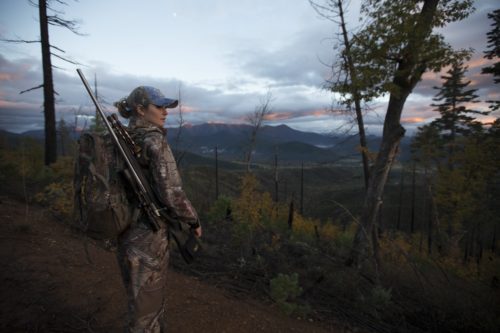
Kristy Lee Cook is most known for being a top 10 Finalist on Season 7 of “American Idol”. She has since stayed in the spotlight and is currently co-hosting “The Most Wanted List” on the Sportsman Channel, along with her 2 friends Jess and Jessi Jo. We recently sat down with Kristy to find out more about her and her love for singing, hunting and all things Browning.
BTC: You are co-host for “The Most Wanted List” on the Sportsman Channel, along with your friends Jessi Jo and Jess. Tell us a little about the concept of this show.
KLC: The show is basically about just having adventures and bringing along friends and family. It’s really fun because we get to bring out a lot of different people on the show. I brought my brother on and we bring celebrities on. It’s just really about showing what it is to share adventures and doing everything you’ve wanted to do in life. A lot of people say there’s things they want to do, and then never do them. We actually go and do them. A lot of people just say it, and they never get the chance to do and see things, so the whole point of the show is to go on these adventures, everything we’ve wanted to do in life, like hunts and anything else we can think of and we go and do it.

BTC: You’re all 3 barrel racers and you (KLC) travel all over the country for that as well to compete in competitions?
KLC: Yes, I do. I’m actually in Texas right now for a competition and I was in Utah and California before that.
BTC: Which do you find to be more of a rush: barrel racing, singing in front of a big crowd, or shooting a big buck?
KLC: Oh boy! Well, I don’t get buck fever. I would say the most nerve-racking thing for me is singing the National Anthem. It’s such a hard song to sing and if you mess it up you’re known for life for messing it up. So that’s probably the most nerve-racking thing for me. I do get nervous
BTC: I’m sure you’ve had the opportunity to hunt with some well-known people. What is one person that you would like to hunt with one day that you haven’t yet & why?
KLC: I would really like to hunt with my sister again. That would be a lot of fun. I took her on her very first hunt and that’s the only hunt she’s ever been on so I’d like to take her again one day. I’m actually going to have one of my other best friends on the show. I kind of just want to bring on my friends and family and help people go on hunts and adventures that they’ve always wanted to do.
BTC: You had a Camaro completely wrapped in camo with the Browning Buck Mark on the hood, so it’s safe to say you’re in love with the Browning brand. How did your love for Browning start?
KLC: Well I’ve just always loved Browning. I came up to them one day and said I would love to put your logo on my car. It’s good advertising and I’m a Browning girl and I want to camouflage my car. So I talked to them about it and they said it would be great if I wanted to do that. I’ve always wanted a camouflage Camaro so I did it! It was just cool.
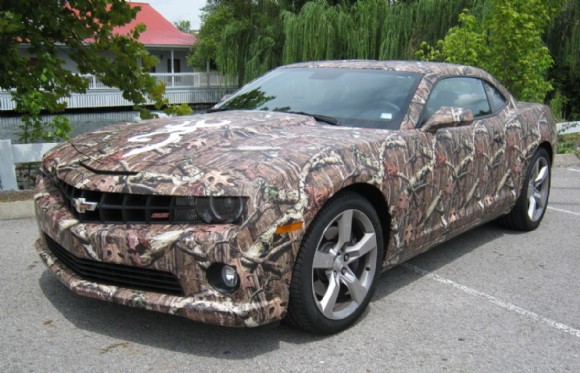
BTC: Was yours was the only one out there like that?
KLC: It was the only one in the world. I did see a few cars get done like that after I did mine, but it was pretty neat having the only car in the world like that. You’d find either people liked it, or didn’t like it. For the people that didn’t like it I was like, “Well, I have the ONLY one in the world like this”. I liked it!
BTC: Any good stories about that Camaro? Drag racing? Tickets? Burnouts?
KLC: Actually yes! I’m so used to driving trucks so when I had my Camaro, I was in Nashville and I was going 80 down the freeway in a 65 zone. I didn’t feel like I was going 83 at all because it just drove so fast and smooth. I got a ticket for that for sure.
I couldn’t take it anywhere without people wanting to take a picture of it. I would be in the gas station in my PJ’s and people would still want to stop and take a picture with me and my car.
I also have a little bit of road rage, so everybody knew it was me who was cutting them off!
Stay tuned for Part 2 of our Q & A with Kristy Lee Cook, to be posted at Huntress View
Nighttime Trail Camera Images – Putting Light On The Subject
August 15th, 2016 by BTC Editor
The evolution of the trail camera has been simply remarkable over the last several years, from taking 35mm film to the photo shop to the almost instant gratification of looking at them on your phone, things are simply in a place that was once only a dream.
With that said, there are still some factors in play when it comes to nighttime images that make them seem behind the times. With all of the advances in technology, why have nighttime images not been perfected yet? Well, in this format, we’ll do our best to explain the basic science of nighttime images on trail cameras.
Seeing the Waves
Nope. We’re not at the beach. But to develop a basic understanding of what’s going on with nighttime images you will want to make sense of the following to help differentiate between the various types of flashes:
- Our eyes can only see light that exists within a small range of the electromagnetic spectrum.
- That electromagnetic spectrum is measured in wavelengths.
- Those wavelengths are measured in nanometers.
Ultimately, these nanometers are your take away from this section because this is the measurement that you can use to understand how each type of flash impacts the quality of your game camera pictures.
If you need a visual aide to help you more effectively wrap your head around the concept of nanometers, NASA has created a handy below:

SOURCE: http://science-edu.larc.nasa.gov/EDDOCS/Wavelengths_for_Colors.html
Measuring the Flash?
Well, we’ve given you the basics on nanometers, but now you’re asking: why do I care? Well, we’ll do our best to explain that here as simply as possible across all three types of flashes found on trail cameras:
White Flash Cameras
If you look at the chart from NASA, you will see that they define “visible light” as being in the range of 400nm to 700nm. That’s pretty much what you get with a “white flash” camera and that’s how you get to see the full color images.
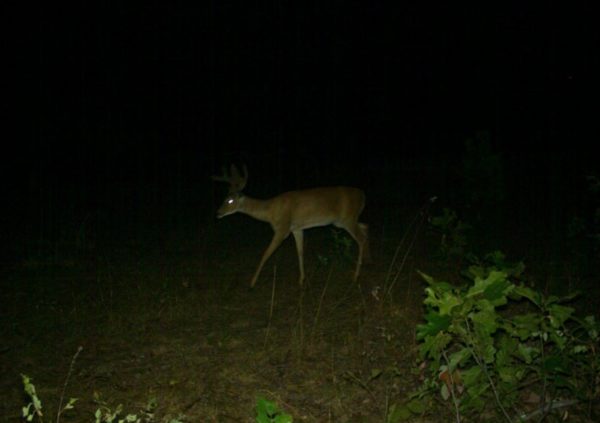
SOURCE: http://www.trailcampro.com/collections/shop-trail-cameras/products/reconyx-hyperfire-hc550
Low-Glow/Standard Infrared (IR) Flash
Now it starts to get a little more complex, because we’re going to step outside the range of “visible light” and move into the infrared range. For cameras that fall into the “low-glow” or “standard” infrared (IR) category, it’s reasonable to suggest that most of these cameras measure around 850 nanometers.
Now, even though these camera flashes technically fall in the “Infrared” category, they are still close enough to the red in the “visible light” range that (A) if someone is looking in the general direction of the LED bulbs when it takes a nighttime image they will see a “low red glow” and (B) the flash still generates enough illumination to take a reasonably good nighttime images.
Obviously, you sacrifice the color of the images here since you are using a flash outside of the spectrum found in the “visible light” range, but you are still getting a reasonably crisp image without the “flash of lightning” effect you get with a white flash camera.
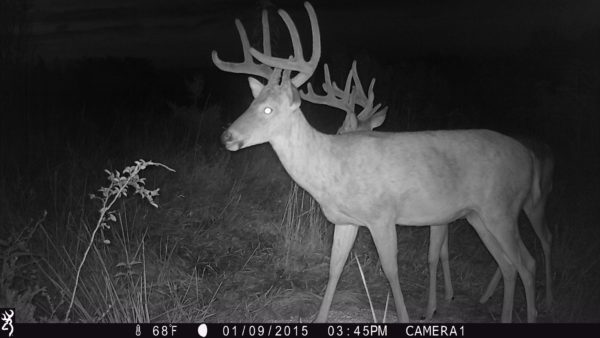
Invisble/No Glow/Black Flash
As we discuss this type of flash, it is worth noting that it still falls within the infrared light range. It is simply further away from the “visible light” range than the low-glow infrared flash cameras. With flashes in this category, it is reasonable to assume that most of them can be measured around 950 nanometers.
The net result of this is that the LED bulbs are not visible when taking a nighttime image, BUT in exchange for that “invisibility” you are sacrificing image quality when compared to the other types of flashes. This is because invisible flash cameras simply do not illuminate the subject matter as much as the other two.
In this image below, if you look back up to the one we used for the “low-glow” images you’ll notice that the image captured by the “invisible flash” camera is a little grainier and has a little more “white noise.” They are both still good images, but you can see that one is a little clearer than the other.

Speed Matters
Now, we could get into a long dissertation about the impact that SHUTTER SPEED has on trail camera images, but for today we’ll just provide you with a few quick notes and save the essay on “shutter speeds” for another day.
In this context we only want to relate shutter speed to the amount of light that is available for capturing images. So here goes: the more light you have available, the faster the shutter speed can be. The less light/illumination you have available, the slower the shutter speed must be.
Basically that means this: during the day you have enough light for the shutter speeds to be super-fast and capture cool images of deer jumping and birds flying. This is why most of the cool action shots we see in trail cam pics are daytime pics.

It also means that as you move further away for the visible light range with your flash (i.e From 700 nanometers to 850 nanometers to 950 nanometers…), the shutter speed must slow down to allow enough light inside the camera to capture nighttime photos. In layman’s terms, as you move from a white flash to a low glow IR flash to an invisible flash, you are increasing the likelihood of blurred images because the shutter speeds needs to slow down. While this example isn’t horribly blurred, it still demonstrates that the illumination from an invisible flash camera accompanied by the slower shutter speed, doesn’t always give you the cleanest image in the world.
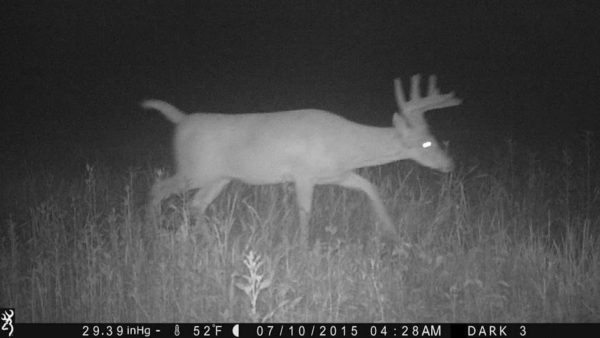
What Do I Really Need to Remember?
Well, here is the gist of it, starting with the very basic premise that there are two types of trail camera pictures: daytime pictures and nighttime pictures.
Beyond that, based simply on game cameras, there are 3 types of nighttime images: those taken with a white flash, those taken with a standard/low-glow IR flash, and those taken with an invisible/black flash.
So if we take those four types of images and rank them based on potential quality of the images based on the lighting, they would be ranked as follows:
- Daytime Images
- White Flash Images
- Low Glow/Standard IR Images
- Invisible/Black Flash Images
Obviously, there can be a lot more depth to the discussion on flashes and nanometers and shutter speeds and everything else that leads to the trail camera pictures you find on your SD cards, but hopefully this gives you a little bit more of a foundation for understanding why some of the pictures you find on your SD cards look the way they do and helps you with you game planning when it comes to where you put your different types of trail cameras!
Tom Rainey
Tom Rainey has been with Browning Trail Cameras ever since they were introduced at retail and enjoys hunting everything from squirrels to whitetail deer…but his obsession is turkey hunting. His grandfather purchased him a Belgium Browning 20-Gauge A-5 prior to his birth and he has been a fan of the Browning brand ever since…
Bowhunting: Tips For Mental Preparation
August 7th, 2016 by BTC Editor
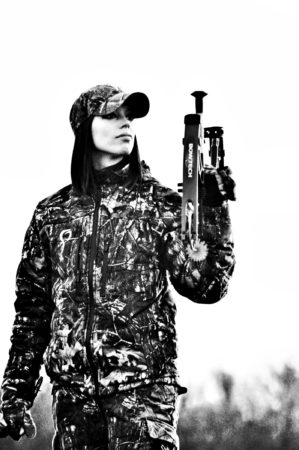
Whitetail archery season is right around the corner! Most likely you’ve spent the past few months or more preparing yourself physically by practicing daily and getting into shape. Being physically fit definitely helps, especially for those who spot and stalk hunt. But being prepared mentally is just as important and is commonly overlooked while preparing for bow hunting.
If you’ve been hunting for a while, you probably have a good idea of how you typically react when a buck walks under your stand and how well you’re able to keep your cool. But if you’re new to hunting altogether, preparing for your first bow hunt can be a little more of a challenge. You’re still working on getting your shooting form down, on top of being nervous about what to expect during your first bow season.
Here are a few things that may help you when preparing yourself mentally for your first bow hunt, your first deer harvest with a bow, or even for those who have had some recent onsets of buck fever and are having trouble getting past that.
Practice
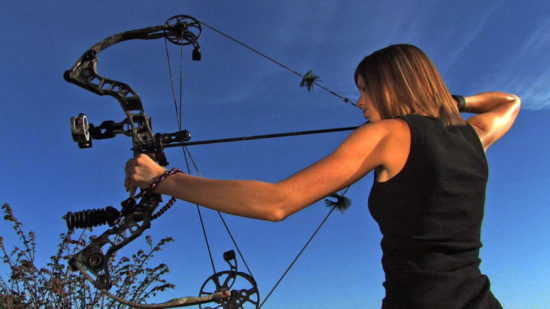
Keep in mind that shooting at a deer from your tree stand or blind is a totally different ball game than just practicing in your backyard. It’s much easier to make a great shot at a target while you’re not under any kind of pressure than it is at a live animal when your adrenaline is pumping. Plus, mother nature can throw some curve balls at you, making it that much more of a challenge.
I think one of the best ways to prepare yourself for shooting at a live animal is to force yourself to practice in ways that simulate real world hunting scenarios. Try shooting at low light, on a windy day or in an uncomfortable position. While you’re hunting you will very likely experience all 3 of those situations, and there’s a good possibility that’s when the buck of a lifetime will step out.
Envision The Shot
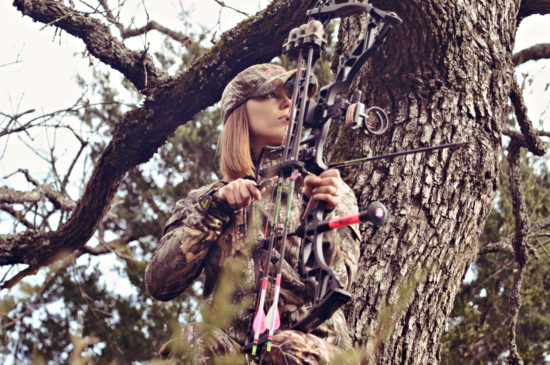
Bow hunting is definitely a mental game. If you go into a hunt with a negative attitude or start doubting yourself, you’re probably going to mess up a shot opportunity. Stay positive and visualize yourself making a great shot on a deer. I will often play out different scenarios in my head to better prepare myself. I check my surroundings and make mental notes on when I think I will be able to draw my bow if the deer were to come from my right, my left, or the front, etc. Whitetail have a mind of their own and you can bet that they probably won’t do what you have in mind. It’s good to expect the unexpected.
Just Breathe
When you are preparing to shoot, just take a few breaths to calm your nerves. I know you may not always have the time to do this, as deer can come in pretty fast and often give you just a few seconds to make a shot. But if you’re watching a deer slowly making its way towards you and you feel like your heart is going to beat out of your chest by the time it gets within shooting range, I highly recommend closing your eyes & just breathing for a few seconds. It really does help.
Know Your Limits
If a deer steps out and it’s too dark to make an ethical shot or it’s just a little farther than what you are comfortable with, don’t force it. One of the best ways to break your confidence is to make a bad shot on an animal. If you’ve been hunting long enough you will mess up sometimes, as none of us are perfect. Just make sure you aren’t messing up because you’re pushing yourself past your limits. When in doubt, just pass on the shot.
Hunt Alone If Necessary
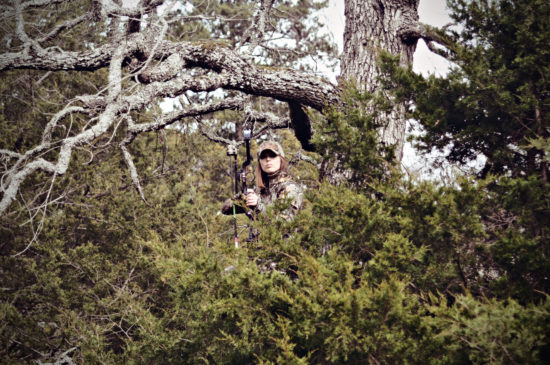
This may not seem like an issue, but for me it is. I get more nervous when there’s someone in the stand watching me than if I were to just hunt alone. My first deer with both rifle and bow were during solo hunts and I preferred it that way. I had practiced enough that I was confident in my shooting ability and didn’t want to listen to another person’s voice telling me what to do, on top of trying to listen to the voice in my head as well. For me, that worked and I feel it helped me stay more focused. That may not work for everyone though, so if you feel you need someone there to help guide you through it, that’s ok too.
Experience is the best teacher with bow hunting, but unfortunately when you’re new to it you don’t have that luxury. The best thing you can do is just make sure you’re as prepared as possible, both physically and mentally, for whatever this bow season may throw at you.
Good luck this season!

Andrea Haas
Andrea Haas is a Pro-Staffer from Missouri who enjoys turkey hunting, deer hunting and bowhunting. She is also the founder of the Huntress View, an organization formed to help strengthen the ever growing community of women hunters.
